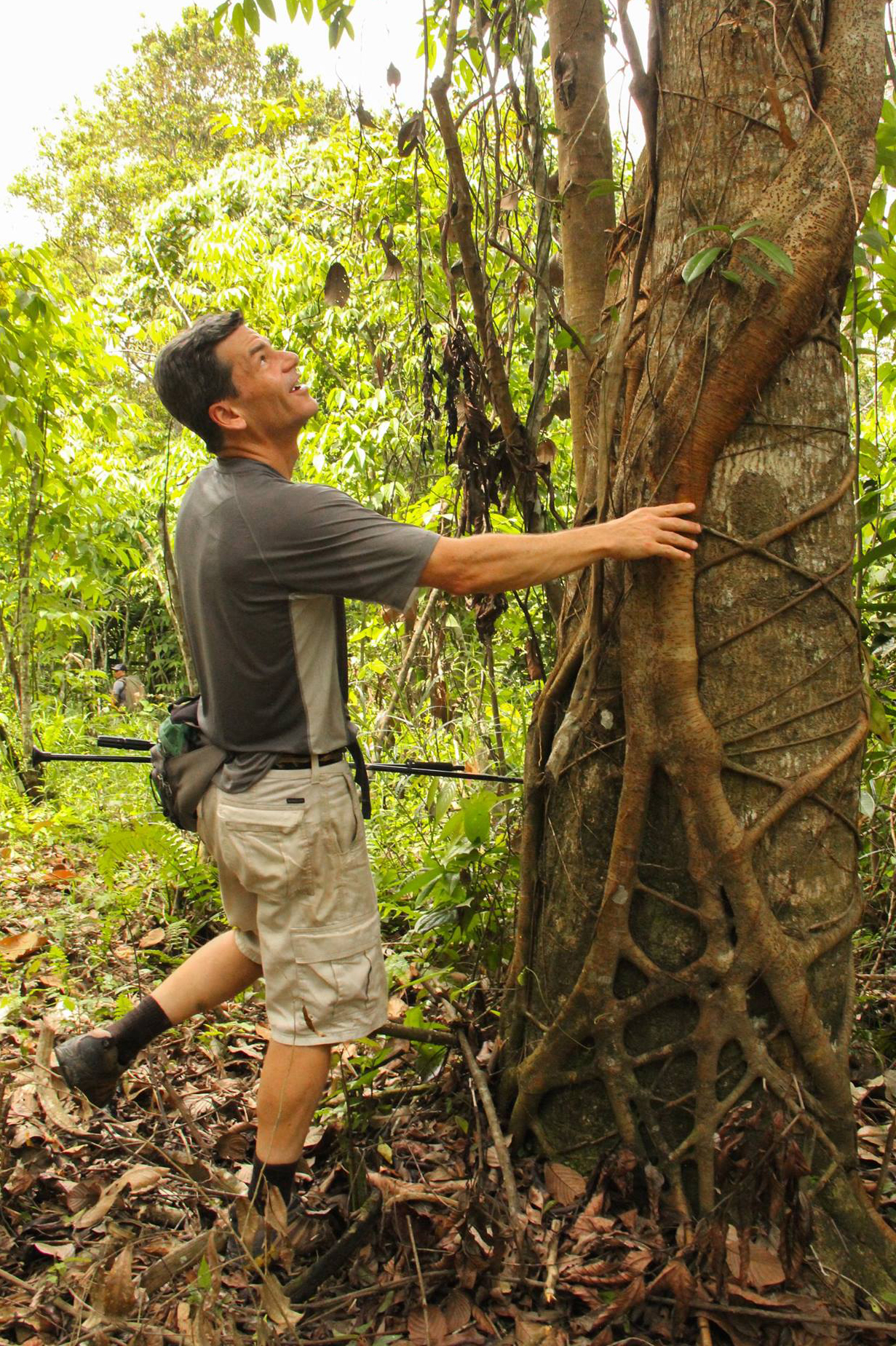Principal Investigator: |
|
|---|---|
|
|
Jim McGuire: Jim’s primary research interests are in phylogenetics, population genetics, biogeography, and comparative biology of reptiles, amphibians, and hummingbirds. He is particularly interested in how complex faunas, such as those of Sulawesi and Indonesia’s Lesser Sunda Islands, have been assembled over time, as well as the processes underpinning diversification, and how species both form and sometimes merge again following secondary contact. Jim has a long-standing interest in hummingbird adaptation to high-elevation environments. A more recent interest is the elevational diversification of amphibians and reptiles on the mountains of Sulawesi. |
Postdocs: |
|
|
Ammon Corl: Ammon’s research has dealt with four broad areas aimed at better understanding evolutionary diversification, including 1) the factors leading to the evolution of new species, 2) the effects of sexual selection on phenotypic and genetic diversity, 3) the maintenance and loss of polymorphism, and 4) the genetic basis of polymorphic mating phenotypes. His main study system has been the side-blotched lizard (Uta stansburiana), a species that is polymorphic for three different male mating strategies characterized by distinct throat colors and mating behaviors. The mating strategies are maintained by an evolutionary analogue of the rock-paper-scissors game wherein orange males take territory from blue males because they are more aggressive, yellow males beat orange males by sneaking onto their large territories, and blue males beat yellow males by closely guarding their mates. Ammon is currently investigating the genetic basis of these different mating types using next-generation sequencing methods. The goal of this project is to better understand how distinct mating types evolve within a species and how color signals are linked to behavioral differences. |
|
|
|
Umilaela Arifin: Umilaela is broadly interested in the amphibians and reptiles of Southeast Asia, with a special interest in those occurring in Indonesia. She is particularly interested in amphibian morphology, phylogenetic systematics, evolution, phylogeography, ecology, behavior, and conservation. Her research is currently focused on the evolution and ecology of ranid frogs with gastromyzophorous tadpoles (tads with stomach suckers for adhering to rocks in swift-flowing streams). Umi officially joined the lab with a Marie Curie postdoctoral fellowship in March but is currently safely ensconced in Germany as the US suffers through the Covid-19 pandemic. Umi’s research was recently showcased on the SSAR website! |
|
Graduate Students: |
|
|
|
Sina Amini: Sina spent a year living in the forests of Ecuador and has a deep and abiding love of the amphibians and reptiles of tropical America. However, after arriving at UC Berkeley he became fascinated by the evolutionary basis of sexual dichromatism and an unusual polymorphism exhibited by various hummingbird species in which some females exhibit male-like plumage. Thus, for his doctoral research, Sina is investigating the evolutionary and hormonal basis of this unusual phenotypic outcome, with a special emphasis on the hummingbird genus Heliangelus. |
|
|
Isaac Krone: Isaac is interested in integrating modern diversity with long-term patterns in vertebrate evolution. Previous work centered on using geometric morphometrics to investigate large-scale functional and allometric trends in morphology in wrasses and non-mammalian synapsids. For his dissertation, he plans to investigate the interplay of geographic and morphological constraint & lability in the evolution of convergent morphotypes and ecologies within reptiles and amphibians, especially with respect to the evolution of extreme morphologies such as limb reduction in lizard lineages. |
|
|
Alexander Stubbs: Alexander is interested in signal evolution and sensory biology as well as using genomic tools to better understand phylogenetic and evolutionary questions in reptiles and amphibians. He has studied mechanisms and optimization of color vision in reptiles and also in organisms previously thought to be colorblind (e.g., cephalopods). Alexander is also interested in signal processing and studying signaling and sensory systems. He also loves tropical reptiles and amphibians, with a primary focus on eastern Indonesia. |
Undergraduate Students: |
|






